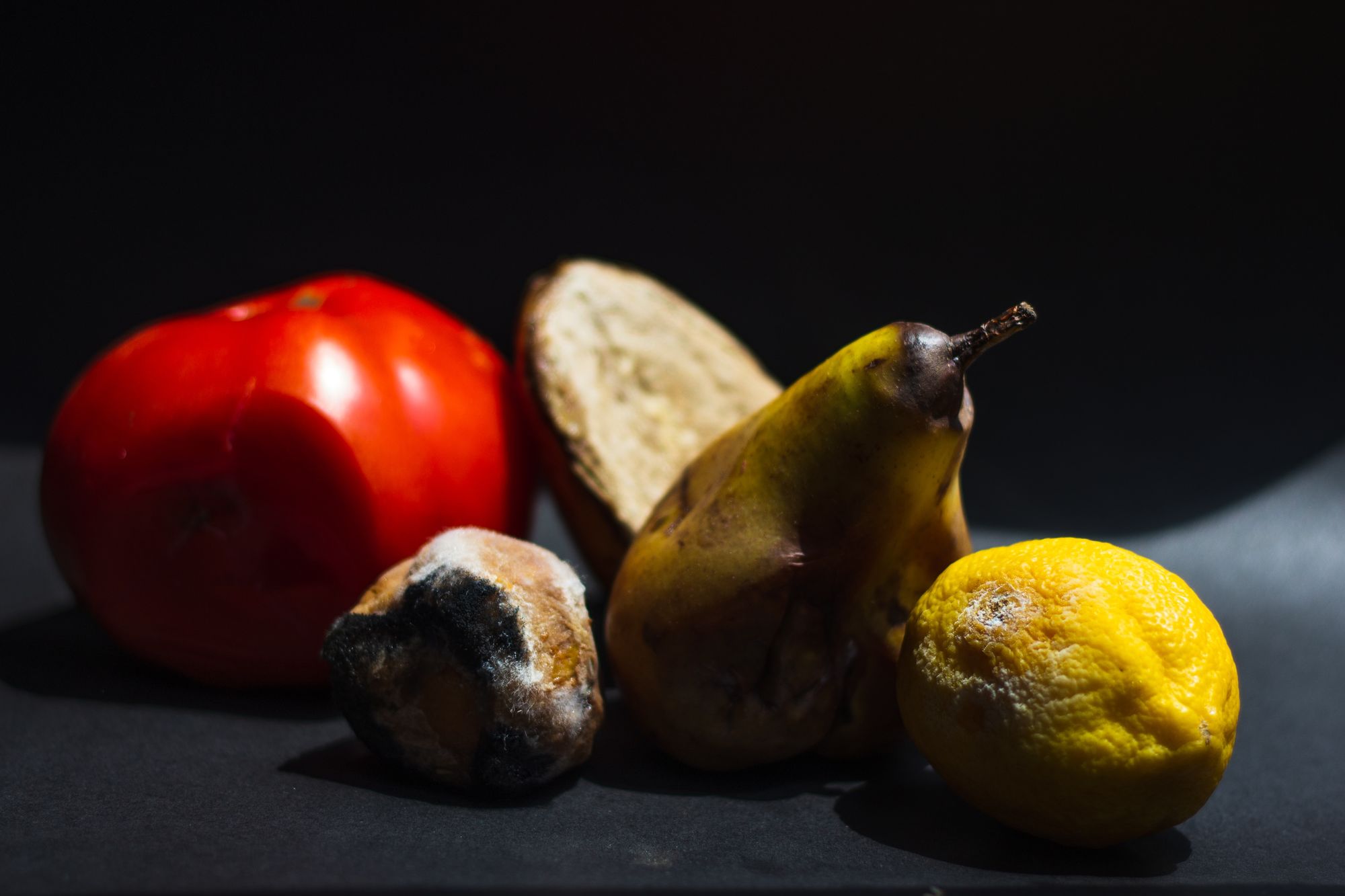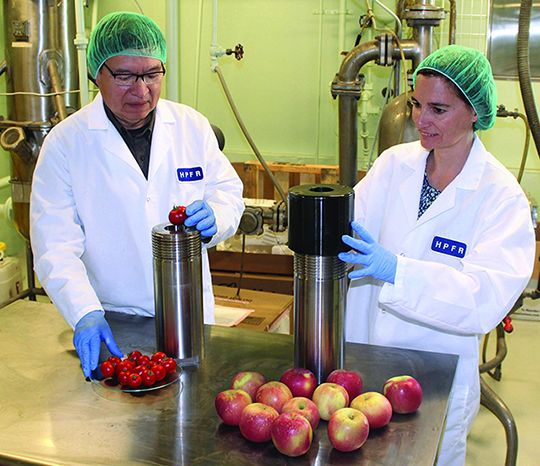
Cooling food - regular, salty and constant volume.
Modern fridges and freezers do a great job keeping food fresh but have some sustainability issues. Solutions exist now and there are some interesting early stage ones too.
Summary: Cooling down foods can help to prevent / slow down spoiling making them last longer. Modern conventional refrigerators use the absorption and releasing of heat when a liquid changes to a gas and vice versa to cool the inside cabinet and keep food fresh. However, it is not without sustainability challenges including energy use and global warming potential of the refrigerants (the liquid/gas) used. We introduce briefly two alternatives that are still at early stages that could use much less energy and less harmful materials.
Why this is important: Refrigeration and freezing are important tools in helping food to last longer. If we can make those processes less energy hungry and with lower impact on the environment they can be more sustainable.
The big theme: There are real concerns about our ability to feed the world, while at the same time trying to reduce the impacts on our natural world. Agriculture and the food and beverage industries sit at the intersection of a number of UN Sustainable Development Goals. The goals are either directly relevant (for example, goal 2: zero hunger) or have a causal relationship (for example, education improving with better nutrition and less pollution). Reforming these industries is going to require massive social and economic change and disruption to production methods, to supply chains and to employment.

The details
How foods go bad
There are a number of key mechanisms for spoiling food or making it unfit for us to eat.

The main ones are:
- Enzymatic autolysis: enzymes are large protein molecules, naturally present in foods, that act as catalysts for certain chemical processes. In some cases those processes are desirable - for example, some help fruit ripen. However, other enzymes help to accelerate decay in foods by effectively breaking the cells down.
- Oxidation: when food is exposed to air, oxygen in the air can react with polyphenols (compounds present in many foods) in a reaction which is often accelerated (catalysed) by enzymes to produce a brown pigment called melanin. This is referred to as 'enzymatic browning' and as with enzymatic autolysis it can sometimes be desired - developing the colour in coffee and tea. However, if you have ever bitten into an apple and left it on the side, you can see how quickly it turns brown! The oxidation of fats may also be accelerated by light (by essentially creating more reactive oxygen). Oxidation can also occur without enzymes being present (non-enzymatic browning or the 'Maillard reaction' - browning bread is a good beneficial example).
- Microbial spoilage: microbes are organisms that are so small they can't be seen by the naked eye. Bacteria and fungi (yeasts and moulds) are the main organisms that can spoil food by using nutrients in the food to grow and multiply themselves. Furry growth on the surface is one example. Sometimes those microbes are pathogenic or disease-causing.
Let's now look at different ways of avoiding the above, i.e. how we can preserve foods. In particular we shall focus on one very common method: cooling (both refrigeration and freezing), and how there are alternatives to how we cool that can be more energy efficient.
Main ways of preserving food
The main ways of preserving food and keeping it fresh and in a fit condition to eat are by stopping - really slowing down - the above main mechanisms.
High water content in foods can support a lot of microbial growth. Historically foods were dried to help them last longer. Salt was also, and still is, used to draw out moisture and preserve foods.
Exposure to oxygen and light can also drive some of the mechanisms above including supporting microbial growth. Fermentation is a process where carbohydrates in foods are oxidised to create organic acids, alcohol and CO2 which then limit the growth of decay and pathogens. More simply keeping foods in containers in closed cupboards or pantries can also help.
Temperature can play a big part. Both microbial and enzymatic driven spoilage are faster at higher temperatures. Modern day canned foods help foods last longer by using high heat to kill microorganisms and then sealing them in an airtight way to prevent other organisms getting in.
Generally speaking bacteria start to become dormant at temperatures below around 10oC and so don't multiply - although they are still there.
There are many other ancient and modern methods, but for this quick insight we are going to focus on temperature and specifically refrigeration and freezing.
Regular: refrigeration and freezing
Refrigeration and freezing have been used as means of preserving foods for centuries. Simple and ancient methods ranged from keeping food in caverns or caves, to submerging in cold ponds to, of course, using blocks of ice.
Modern fridges and freezers work based on a relatively simple physics principle:
When you compress a gas into a liquid, heat gets released; when you let a liquid expand into a gas, it soaks up heat.
In a closed system if you have areas where you are compressing a gas into a liquid and other areas where you are allowing the liquid to expand into a gas (evaporate), then you are essentially moving heat from one place to another. A fridge or freezer is really a type of heat pump.
In the diagram below the evaporating liquid (refrigerant) is absorbing heat from the fridge chamber and turning into a vapour (the gaseous form of the refrigerant).

It flows back to the compressor pump where it is compressed into a high pressure vapour. As this vapour passes over the condenser and radiator fins, its heat gets released to the room - that's why the back of a fridge can feel warm. It condenses into a warm fluid which now passes through an expansion valve which slows the fluid down, allowing it to start to expand and then turns back into a gas in the evaporator... and back around we go!

In the closed system that is the fridge, you are moving heat from inside the fridge to outside - so a fridge is really a heat pump.

There are some sustainability issues with modern fridges/freezers.
The refrigerants used are hydrofluorocarbons (HFCs) and hydrochlorofluorocarbons (HCFCs). Whilst they do far less damage to the ozone layer than their predecessors, chlorofluorocarbons (CFCs) which were phased out by the 1987 Montreal Protocol, they are very potent greenhouse gases. Some of these gases can leak during manufacture, but more often during (improper) disposal.

Alternatives do exist including ammonia, carbon dioxide, propane and isobutane but typically these are for commercial refrigeration systems. There are HFCs with lower global warming potential and other alternatives such as hydrofluoroolefins (HFOs) and mixtures of HFCs and HFOs too.

Another issue is electricity usage. A fridge or freezer needs to be on all the time to keep the evaporation-compression cycle going and keep the cabinet cold.
According to Carbon Footprint a fridge is one of the biggest cost appliances in the average UK home to operate when considering it is always on.
Salty: ionocaloric cooling
We just discussed that modern fridges work when the refrigerant changes from a liquid to a gas and back again, moving heat from the cabinet to the outside world. To achieve that has sustainability issues. However, there may be a way to achieve that 'phase change' and accompanying heat movement or cooling in another way.
Researchers from the Lawrence Berkely National Laboratory and the University of California have been looking at the ionocaloric cycle as an alternative method.
We actually see this quite regularly in cold climate countries. When roads are icy, you will see gritter or salt spreader trucks throwing salt onto the roads. This lowers the freezing point of the ice, melting it.
In this method, an electric current is used to move ions through a material that changes that material's melting point. When that material melts it absorbs heat from the surroundings, thereby cooling them. When the ions are removed from the material, it solidifies, giving the heat back.
In their experiments the researchers used a salt made with iodine and sodium, alongside ethylene carbonate (an organic solvent used in lithium-ion batteries) and achieved a temperature change of 25oC using less than 1 Volt.
It's at the lab stage but is promising as an alternative, potentially more energy efficient and has less global warming potential.

Constant volume: Isochoric freezing
One threat to food quality using current methods of commercial freezing is ice crystallisation. Ever opened a bag of frozen vegetables to find it looking like it they are wearing a furry ice jacket?! To prevent this, often rapid freezing techniques are used which can be energy hungry.
An alternative freezing method with potential commercial uses, called isochoric freezing, works by storing foods in a sealed, rigid container that is completely filled with a liquid such as water. 'Isochoric' means at constant volume, i.e. the container always has the same volume of liquid/solid.
Isochoric freezing preserves food without turning it to solid ice. That means that there could be energy savings relative to conventional freezing where the food freezes solid. As long as the food stays immersed in the liquid portion, it is protected from ice crystallisation.

The process still needs to be tested and proven at scale but is a promising development. USDA Agricultural Research Service food technologist Cristina Bilbao-Sainz commented that the energy savings could also reduce carbon emissions "equivalent to removing roughly one million cars from the road."
The process could potentially have applications in the world of cryogenics for preserving human tissue.
We shall explore this area in more detail in an upcoming perspective looking at food preservation more broadly.
Something a little more bespoke?
Get in touch if there is a particular topic you would like us to write on. Just for you.
Contact us
Please read: important legal stuff.

